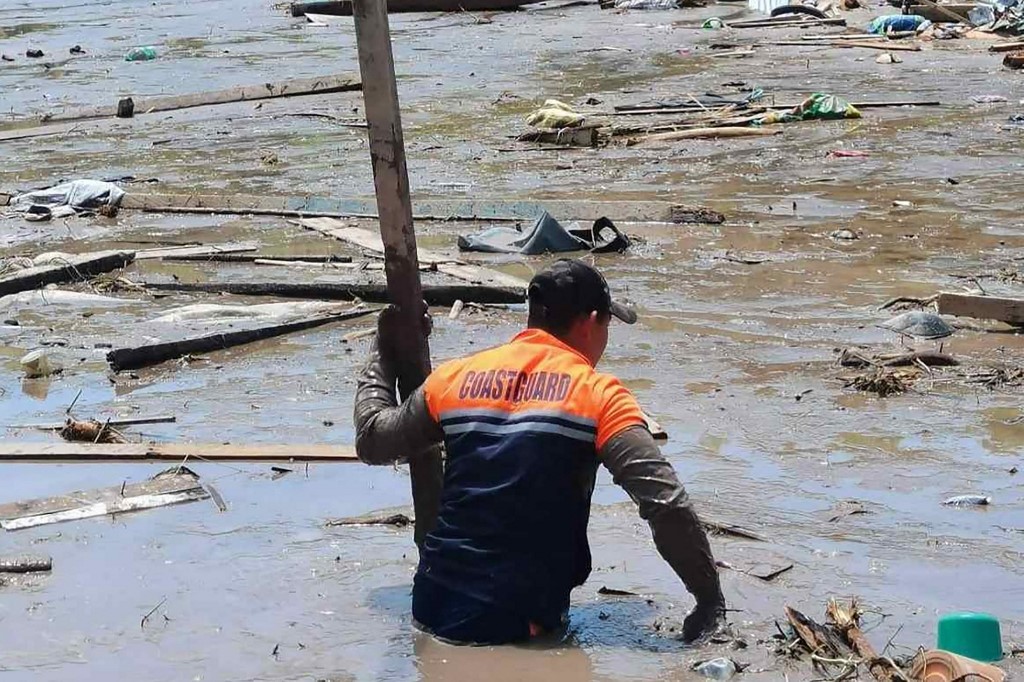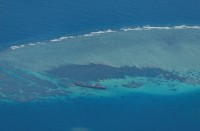
by Ted Aljibe with Ron Lopez in Manila
Agence France-Presse
NOVELETA, Philippines (AFP) — The death toll from a storm that battered the Philippines has jumped to 98, the national disaster agency said Monday, with little hope of finding survivors in the worst-hit areas.
Just over half of the fatalities were from a series of flash floods and landslides unleashed by Tropical Storm Nalgae, which destroyed villages on the southern island of Mindanao on Friday.
Mindanao is rarely hit by the 20 or so typhoons that strike the Philippines each year, but storms that do reach the region tend to be deadlier than in Luzon and central parts of the country.
“We have shifted our operation from search and rescue to retrieval operation because the chances of survival after two days are almost nil,” said Naguib Sinarimbo, civil defense chief of the Bangsamoro region in Mindanao.
The number of fatalities is likely to rise, with the national disaster agency recording 63 people still missing and scores of others injured.
The Philippine Coast Guard posted pictures on Facebook showing its personnel in devastated Kusiong village, in Maguindanao del Norte province of Mindanao, wading through thigh-high mud and water, using long pieces of timber in the search for more bodies.
Kusiong was buried by a massive landslide, which created a huge mound of debris, just below several picturesque mountain peaks.
Meanwhile, survivors continued the heartbreaking task of once again cleaning up their sodden homes.
Residents swept muddy water from their houses and shops as their furniture and other belongings dried in the now sunny streets of Noveleta municipality, south of the capital, Manila.
“In my entire life living here, it’s the first time we experienced this kind of flooding,” said Joselito Ilano, 55, whose house was flooded by waist-high water.
“I am used to flooding here but this is just the worst, I was caught by surprise.”
Perfidia Seguendia, 71, and her family lost all their belongings except the clothes they were wearing when they fled to their neighbor’s two-storey house.
“Everything was flooded — our fridge, washing machine, motorcycle, TV, everything,” Seguendia told AFP.
“All we managed to do was to cry because we can’t really do anything about it. We weren’t able to save anything, just our lives.”
– More rain on the way –
Nalgae inundated villages, destroyed crops and knocked out power in many regions as it swept across the country.
It struck on an extended weekend for All Saints’ Day, which is on Tuesday, when millions of Filipinos travel to visit the graves of loved ones.
Scientists have warned that deadly and destructive storms are becoming more powerful as the world gets warmer because of climate change.
The state weather forecaster warned that another tropical depression was heading towards the Philippines even as Nalgae moved across the South China Sea.
The new weather system could bring more heavy rain and misery to areas badly affected by Nalgae.
Landslides and flash floods originating from largely deforested mountainsides have been among the deadliest hazards posed by storms in the Philippines in recent years.
In April, deadly landslides and flooding triggered by another tropical storm smashed farming and fishing communities in the central province of Leyte.
© Agence France-Presse







